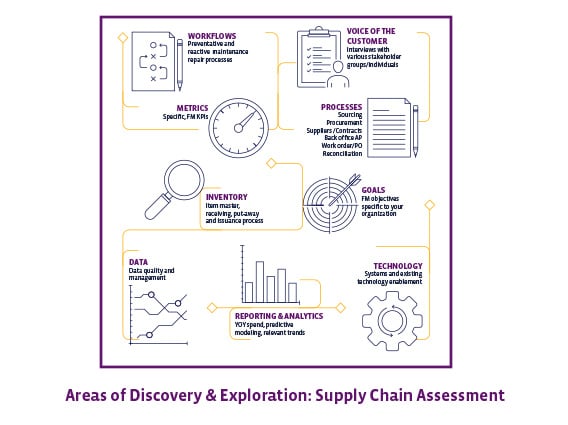Home » Supply Chain Services » Supply Chain Risk Assessment
It’s time to understand the risks & deficiencies of your suppliers & overall supply chain. It’s time to implement corrective actions and solutions to eliminate risk and improve overall supply chain & maintenance performance.
Many companies are experiencing price pressures, because of inflation, parts costs, rise of commodity prices, stock-outs, etc. Many organizations don’t know what they’re spending, because they don’t have the visibility, let alone the capability to combat these rising costs. Understandably, this is impacting their ability to maintain their plants, facilities, and assets…let alone and meet their KPIs.
SDI’s assessment provides actionable insights and recommendations to help customers assess how the performance of their maintenance teams are impacted by the growing supply chain disruptions and downstream risks.
Our goal is to understand your objectives and how they’re measured. We first identify the pain, then root out the causes – internally and externally.
With a deeper understanding of how both the supply chain and your internal processes are impacting performance, we recommend immediate, near-term, and longer-term steps to directly impact the KPIs that matter to you like parts/supplies budget, first call work order completion, mean-time to repair, daily wrench time, and work order productivity.
You may be too close to your operation to see the potential savings you’re missing out on. SDI brings a fresh perspective into the picture, grounded in over 50 years in helping companies streamline for greater end-to-end efficiencies. Our supply chain analysis focuses on key areas that are often overlooked, uncovering savings and process improvements that deliver bottom-line results.
Too often parts are an afterthought. Our team of seasoned experts will take a holistic approach in examining your entire FM/MRO supply chain to provide you a roadmap for your digital supply chain transformation journey. Make your business case for change and request the Supply Chain Assessment from SDI today.
